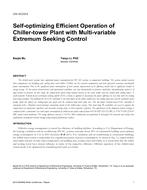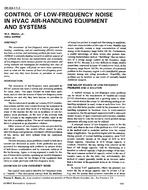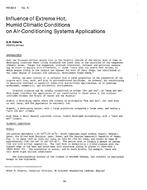This paper considers the numerical modeling of room airflows and illustrates the usefulness of computational fluid dynamics as a design tool for ventilation systems. A computer code, which simulates steady, buoyant, turbulent, three-dimensional flows in Cartesian coordinates, was developed. The time-averaged equations for conservation of mass, momentum, and energy are solved. A low Reynolds number k-e model is used to simulate the turbulent transport. The code was validated by comparing it to benchmark data for both lid-driven and buoyancy-driven cavity flows. The airflows in two unfurnished rooms were then simulated. Streamlines show that one room is poorly ventilated because a large portion of the incoming air does not pass through the occupied region. The other room has uncomfortable regions because of excessive turbulent fluctuations. Use of computational fluid dynamics enables the velocity and temperature fields to be investigated in significantly greater detail than is possible with either analytical or experimental models.
Units: Dual
Citation: ASHRAE Transactions, 1998, Vol. 104, Part 2, Toronto, ON
Product Details
- Published:
- 1998
- Number of Pages:
- 9
- File Size:
- 1 file , 200 KB
- Product Code(s):
- D-7647


